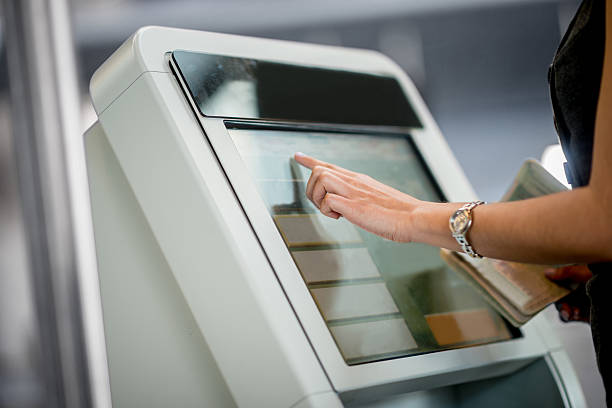Self-service kiosks are digital information centers that feature either static (non-touch) screens or touchscreens, which are considered to be “interactive.” Kiosks that utilize touchscreens allow users to access a specific set of automated services, while static displays are generally used only to display a single image or set of images with information, such as a digital ad. The purpose of self-service kiosks is to allow a customer to interact with a company, product, brand, or service, and via automated means, without requiring additional personnel, like customer service agents. Self-service kiosks are becoming quite common in many different environments, but some of the most popular applications include quick-service restaurants (QSRs), movie theaters, and hospital or college campuses.

What are the Functions of a Self-Service Kiosk
The primary function of a self-service kiosk is to allow customers to complete various common tasks on their own without the assistance of a dedicated employee. This can range from placing orders for food to purchasing train or bus tickets, to depositing and withdrawing money from bank accounts. Whatever the kiosk’s function, the ultimate goal is to give users more freedom and better efficiency. While self-service kiosks do require an initial capital investment, self-service kiosks offer companies the ability to automate simple processes, reducing the need for additional manpower.
What are the Advantages of a Self-Service Kiosk?
One of the primary reasons self-service kiosks have become popular so quickly is that they allow companies to engage with their customer base on the user’s own terms. As you can imagine, there are quite a few benefits to taking this approach:
- Efficiency: With many services now automated, including travel check-in, ticket dispensing, and bill payments, self-service kiosks free up manpower to assist in other areas, potentially those that require more personal attention. For example, self-service kiosks allow contractors, staff and visitors to check in to a business location without assistance, which keeps administrators and front office staff from wasting valuable time that may be better spent elsewhere.
- Adaptability: Since self-service kiosks are digital devices, depending on the configuration, they can often adapt to different situations without requiring an entire redesign. For example, a kiosk that was previously used for wayfinding can undergo a software update that would allow it to be used for visitor check-in as well.
- Connectivity: Most digital kiosks are now connected to cloud-based servers; this means they are able to be accessed remotely, allowing new content to be loaded, software to be updated and troubleshooting to be handled without having to ever physically touch the kiosk itself. Ultimately, this means that once set up, the kiosk can be maintained fairly easily.

- Efficiency: One of the hallmarks of self-service kiosks is efficiency. Because many basic customer services can now be automated, a single, self-service kiosk can often handle traffic that a single employee simply could not.
- Increased Profits: While self-service kiosks do require an initial investment, they are capable of excellent ROI. Since customers are able to engage with companies on their own terms, the upsell potential is much higher, increasing potential profits.